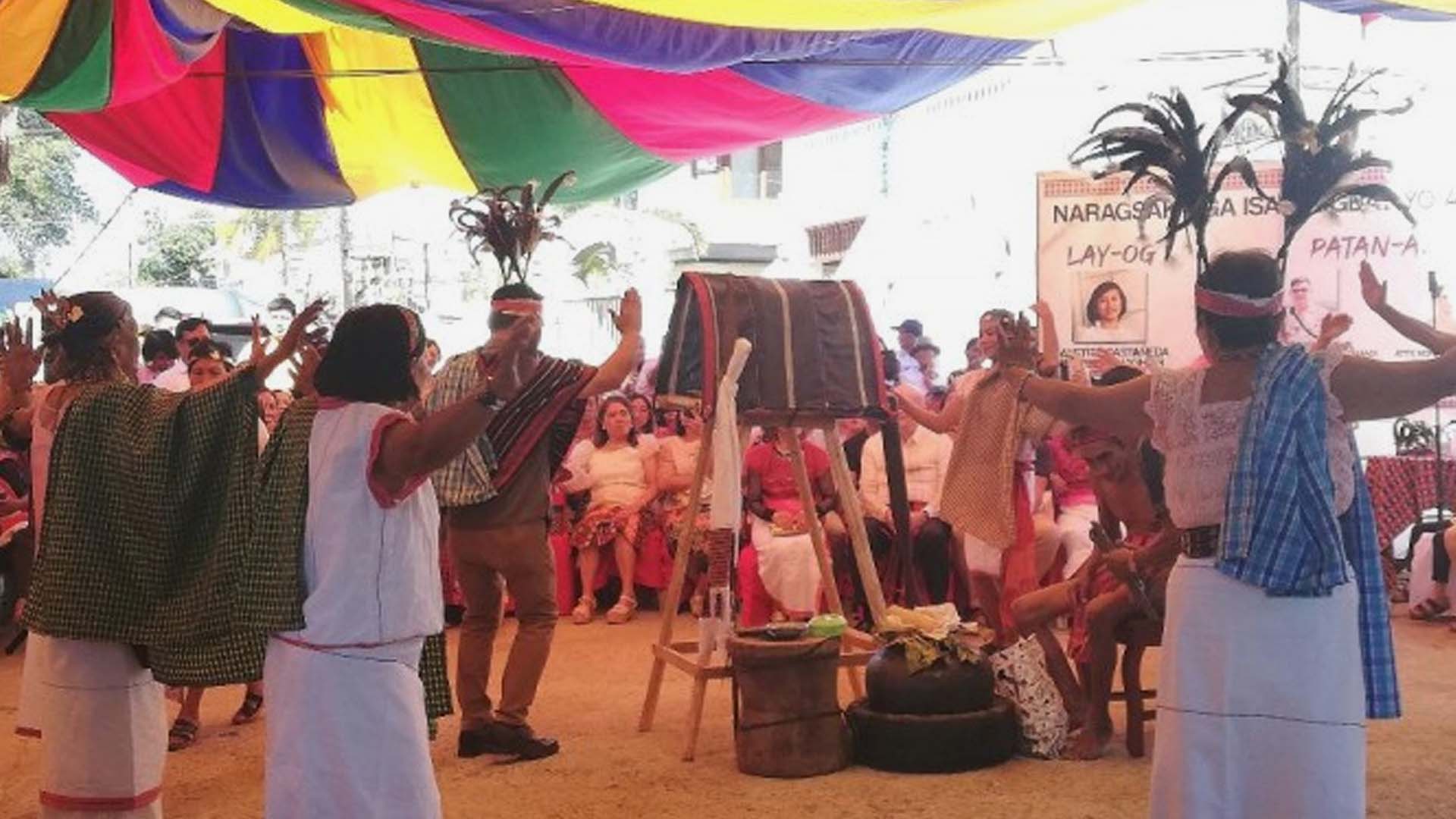The lay-og, a traditional practice by the “Itnegs” (also called Tingguians) celebrating the life of a deceased loved one, is not just about remembering a family member but also keeping a tradition that has been passed on through generations.
The Itnegs live in at least 20 of the 27 municipalities in the province of Abra.
“Lay-og is a celebration of life. It is our way of remembering the importance of a loved one who has gone ahead in another life,” former San Juan municipal mayor Medel Taverner told the Philippine News Agency in Ilocano, among the dialects in Northern Luzon.
Taverner said that as a full-blooded Itneg, he and his siblings were raised observing the culture and traditions of their parents’ tribe.
“With the advent of technology, it makes it more important now to continue practicing the traditions, which are slowly fading. We grew up with the Itneg’s way of life and we do the celebration of life through the lay-og. Because we prepare for the festivity, we also call on tribe members from other towns to join us partake of the offerings and the celebration of the life of our loved one,” he said.
The former mayor organized the lay-og, which was attended by family members from different regions of the country as well as those from abroad.
The event was held for his sister, Mamerta, a nurse in Amman, Jordan, who passed away at the height of the Covid pandemic and whom they were not able to see and send-off through a wake or at least to bury due to government restrictions.
“We opted to invite our tribe members to join us in celebrating the life of our sister,” Taverner said.
Taverner said that to date, he had only witnessed four lay-og celebrations done by his family due to the logistics and financial needs the event entails.
“Our humble family wants to contribute, even just a little, to the preservation of the culture of Itnegs in Abra by inviting our tribe members to the lay-og,” he said.
“We are hoping that by getting together, we are reminded of our roots, our culture, and the need to preserve the culture that was passed on to us by our ancestors,” Taverner added.
Lay-og stages
Antonio Domes-ag, an Itneg from the municipality of Peñarrubia who also served as town mayor and a provincial board member of the province, said lay-og starts with a “bilyete” (invitation), which is sent to the municipal government where the Itnegs reside.
Relatives also get to receive a bilyete.
A tribal elder from each town organizes a delegation for the celebration, and they converge at the residence of the host family.
Offerings are prepared for the event and among these are the “pinaing”, wherein a liver of an animal, normally a pig, is offered along with the bile; “alsong”, a traditional agricultural tool for pounding rice; and a jar filled with native wine that an elder scoop using a bamboo cup and brought around for tribe members or partake.
An emcee called “mantinidor” directs the whole event and announces the start of the lay-og.
The event starts with a prayer from an elder and is followed by tribe members from different delegations doing the “tadek” (native dance) to the tune of the “talukatik” or the “Lablabaan”, which have different rhythms played using the gongs and have dance steps that make the dancers move in sync with the tempo.
Tribe members arrive in their native attire with ladies garbed with their heirloom beads on their heads, neck or arms.
The mantinidor designates representatives from the different delegations for the “rubwat” to fetch the members of the host family who are inside their residence to join the festivity, going around to greet the tribe members who have travelled to join the celebration.
Each head of the direct family members of the dead and each delegation is provided with a “dulaw” (headdress) who leads the dancing, while a representative from each delegation delivers a “dung-aw” asking for guidance from the ancestors.
Domes-ag said lay-og is seldom practiced and is a dying tradition due to the huge financial requirement, with hundreds of tribe members arriving from their towns to be with the host family.
“I am glad there are still some of our tribe members who do it so that the young people can see how it is done and continue to practice it,” he added. (PNA)





















